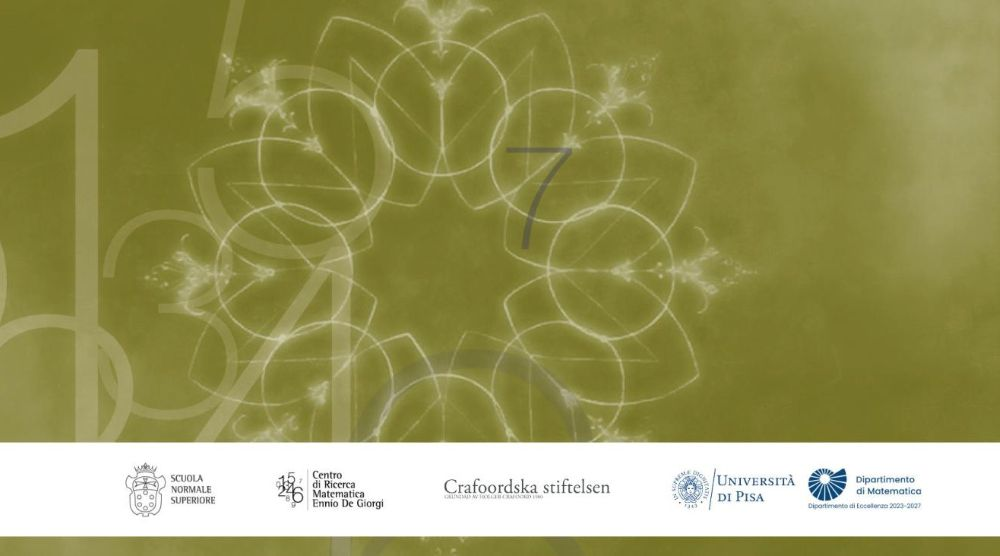The moduli space M_{g,n} of non-singular curves of genus g and n marked points and its compactification, have been central objects in algebraic geometry for many years.
However, lot is still unkown about their geometry, in particular from the point of view of the rational cohomology: this is completly known only for some values of g,n. We will review what is known and focus mainly on...
I will discuss the combinatorial notion of FA modules and how they appear in the holomorphic part of the cohomology of moduli spaces of stable curves. In particular, I will give a complete description of holomorphic 17 forms on the moduli space of stable curves of genus g with n marked points for all g and n. This is joint work with Hannah Larson, Sam Payne, and Thomas Willwacher.
The search for alternative compactifications of the moduli space of smooth curves has been central in the panorama of moduli spaces. A possible way to construct such compactifications is allowing curves with worse-than-nodal singularities in the moduli problem and imposing some stability conditions using the combinatorics of the curves to get the desired moduli space. We classify the open...
Logarithmic geometry is a language that combines piecewise-linear and algebraic geometry, particularly useful for tracking the combinatorics of compactifications and degenerations of algebraic varieties. Olsson's stack of logarithmic structures, and its charts provided by Artin cones, have played a fundamental role in moduli theory and enumerative geometry. Recent developments concerning...
We will discuss various aspects of the divisor geometry of moduli spaces of K3 surfaces. We provide a finite generating set of Noether—Lefschetz divisors for the Picard group, study the structure of the NL-cone, and establish numerical criteria for when a NL divisor on a moduli space of quasi-polarized K3 surfaces $F_{2d}$, or more generally on an orthogonal modular variety, generates an...
The Brauer group of an algebraic variety is a group with many applications, in particular to the study of rational points. For a K3 surface over a number field, the transcendental part of its Brauer group is finite. It was shown by Cadoret-Charles that the size of its p primary torsion is uniformly bounded for K3 surfaces in one-dimensional families.
We give a different proof of this result...
In joint work with Andrea di Lorenzo we computed the Brauer groups of
the moduli stacks of genus three curves and abelian varieties of
dimension three. A crucial step involved constructing explicit classes
by leveraging odd theta characteristics and the map they induced to the
moduli stack of étale algebras of degree 28. Three problems remained
open: computing the pullback map from the...
The study of abelian varieties with non-trivial endomorphism algebras is a classical topic in algebraic geometry. A fundamental result by Shimura classifies all families of principally polarized abelian varieties whose endomorphism algebras properly contain \mathbb{Z}. However, a complete analogous classification for Jacobians remains open. In this talk, we investigate certain families of...
One of the central objects in the intersection theory of curves is the tautological ring. In the last 30 years, remarkable progress has been made in our understanding of the tautological ring, largely due to the connection between the geometry of curves and the geometry of stable maps. Compactified abelian fibrations, and compactified Jacobians in particular, also have tautological rings, but...
A projective structure on a compact Riemann surface is an equivalence class of projective atlases, i.e., an equivalence class of coverings by holomorphic coordinate charts such that the transition functions are all Moebius transformations. Any compact Riemann surface admits two canonical projective structures: one coming from uniformization's theorem, and one from Hodge theory. These yield two...
In this talk, I will show that fixed-domain Gromov–Witten invariants of a positive symplectic manifold (e.g., a smooth Fano variety) count J-holomorphic curves in X satisfying prescribed incidence conditions. This provides a symplectic analogue of a conjecture of Lian and Pandharipande, recently disproved in the algebraic setting by Beheshti, Lehmann, Lian, Riedl, Starr, and Tanimoto. The...
We study the geometry of Hurwitz--Brill--Noether spaces with imposed vanishing conditions at a totally ramified point. These spaces arise naturaly as degenerations of Hurwitz-Brill-Noether loci. Our methods significantly simplify the combinatorics involved in this study, and I will present some applications in low gonality. This is joint work with Richard Haburcak.
Weighted blow-ups are a birational transformation that naturally appears in moduli spaces. One instance where this happens, is when studying the logarithmic Hilbert scheme of points on a curve $C$ equipped with a log structure. Today we will give a quick introduction to both weighted blow-ups and logarithmic Hilbert schemes of points on curves. Then we will focus our attention on the examples...

